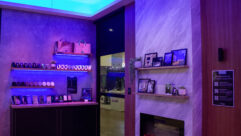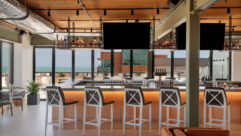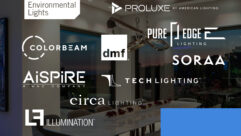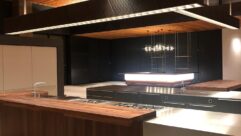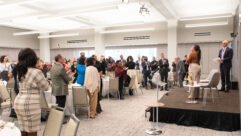This month in our Pro AV Today newsletter, we covered a disturbing story about concert lighting and eye damage. This hit home for me in part because I had just attended a ZZ Top concert that included some lighting effects that felt borderline for my eyes. I do bring ear and eye protection to concerts (sunglasses look on brand at a ZZ Top concert). I take ear protection quite seriously since I already have tinnitus from that time nine years ago when I didn’t. But the eye protection is almost an afterthought, something I plan to carry but could maybe forget to bring. I’ll just be more vigilant in the future.
The incident we covered took place at ApeFest, a Bored Ape NFT event, so no real danger that any of us would have been there. Also it was in Hong Kong so you might be thinking there may be different standards around safe lighting there. But of course regulations overall are pretty non-existent, and the creativity of designers left pretty unfettered. When I worked in theme parks it was very strict around lasers and that’s still the case I’m told. But overall, there is little to impede the sensory overload of concerts. That’s just a matter of education and personal responsibility.
The ApeFest incident does seem to have stemmed from a misuse of UV stage lighting. Some attendees speculated it was a type of fixture that was not safe for audience-facing effects, depending on where people were sitting and how much they looked into the light. Several people posted to X about trips to the emergency room for pain and loss of vision and a diagnosis of photokeratitis i.e. welder’s eye.
Of course there are safer UV fixtures and safer ways to use them. But there always will be tension between dazzling audiences and over-dazzling them. Specific fixtures and positions get the nickname “audience abuse” and “audience blinders” not for nothing. Fair enough. The professionals I know take their lasers very, very seriously. With everything else they each have personal preferences for what is too much (but may still do it anyway if the artist insists). I’m sure it’s on a spectrum, no pun intended. Overall, it’s really down to education for people to be aware of their own eyes and ears. It’s also reasonable to be extra aware internationally. I have many personal memories of situations that may have appeared to be familiar best practice but were not that way under the hood. Let’s just say not everyone is as careful with 220 and cherry pickers as you’d like them to be.
So while you’re protecting your ears, give a thought to your eyes and impart that info to your kids even if they don’t appear to be listening. When it comes to the vulnerability of the human body—specifically our own precious senses—don’t assume that the customary guardrails exist to specifically protect you, or that customary guardrails are being employed.


